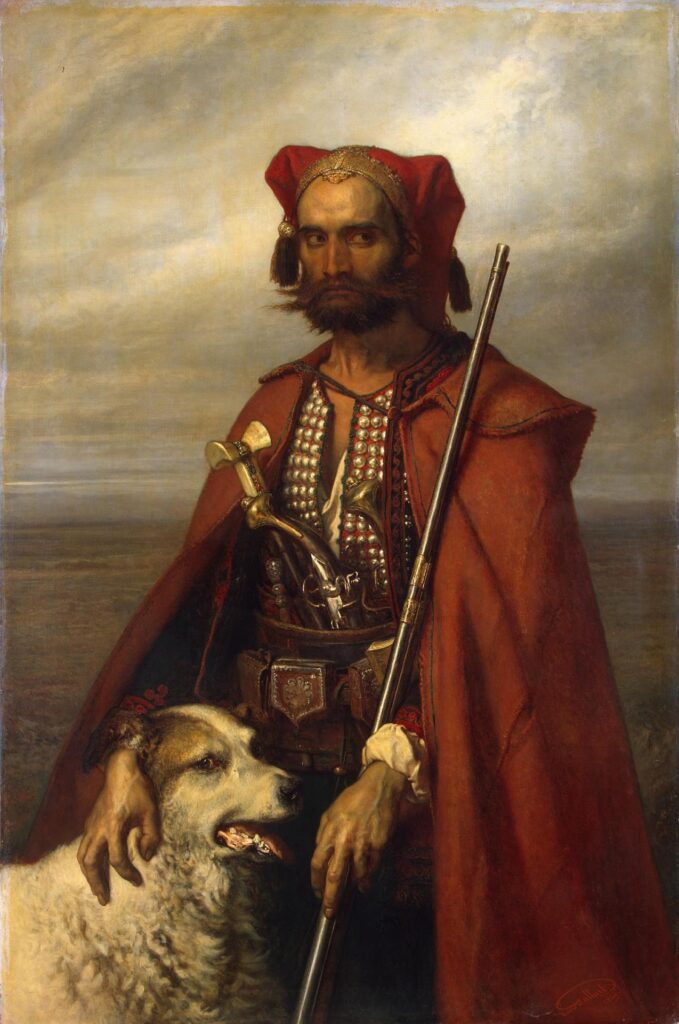A Brief History
Tornjak are a breed of livestock guardian dog (LGD) from the countries of Croatia and Bosnia-Herzegovina. They were provisionally recognized by the FCI in 2009, and gained full recognition in 2017. In North America, they are fully recognized by the UKC and provisionally recognized by the AKC in the Foundation Stock Service (FSS). We are actively working toward CKC and full AKC recognition.

A common question we get from people unfamiliar with the breed is “what breeds went into a Tornjak?” With the assumption being they are some modern combination of breeds. However, the Tornjak is an old breed with written history dating back to the 11th century. Breed historians have described that they most likely split off from Tibetian Mastiffs originally, but after that, Tornjaks have been Tornjaks for a very long time. In the 1900s, through wars and the decline of traditional shepherding, the Tornjak almost went extinct. Thanks to a dedicated group of breed enthusiasts, the Tornjak was revived in the 70s using landrace shepherds best determined to match the historical descriptions of the breed. Many breeds that undergo a bottleneck event like this see a significant drop in genetic diversity or loss of historical type, but responsibly bred lines still maintain a healthy COI (coefficient of inbreeding) and display strong breed type. The unique head shape characteristic of the breed can be noted in 1800s painting “Sentinel the Croat” by Belgian painter Louis Gallait.
Tornjak Pros and Cons
We’ll start with what can be challenging about the breed. Many traits that help LGD excel at their job make them less adjusted to the modern world. As a breed group, LGD are known for their “stubbornness”, a tendency to wander, resource guarding, loud barking, dog aggression, and even human aggression. Historically, these traits allowed them to fiercely guard their charges over the vast expanses they grazed. In our modern, often pet-focused world, these traits can be harder to accommodate, leading to the increase of LGDs and LGD mixes in shelters we are starting to see. A Tornjak is a very smart dog that thinks for themselves. This means they require more of a partnership in training and don’t enjoy repetition. They are a double-coated breed that sheds seasonally, so Tornjak owners should be prepared for a dog fur explosion when they change from their winter to summer coat and back again. Tornjaks are a large, powerful breed, so training and consideration for their size are essential. When they want to snuggle, they will not take up just your lap, they will take the whole couch. As with most XL breeds, Tornjaks are slow to develop. They are not considered an adult dog until after 2, and it can still take some time after that for their brain cells to all get on board. Raising a Tornjak puppy requires patience.
So what makes up for these drawbacks? For an LGD breed, Tornjaks are very versatile and loyal. Our standard describes them well as:
“Of steady disposition, friendly, courageous, obedient, intelligent, full of dignity and self-confidence. Fierce in guarding property entrusted to him, cannot be bribed and is suspicious of strangers. Devoted to his master and very calm in his presence. Very affectionate towards persons living in his immediate vicinity. Learns quickly and keeps this in his memory for a long time, gladly performs tasks assigned to him. He is easy to train.”
Tornjaks are renowned for being loyal protectors of their flock and family. Despite being a smaller, “softer” LGD, they are courageous enough to take on whatever nature throws at them. They display a remarkable level of empathy. They think for themselves, but also value what their people think. A correct working coat should be easy to maintain with minimal upkeep, as it naturally repels dirt. Their coat allows them to be incredibly cold hearty from a young age, and correct seasonal shedding also allows them to be fairly heat tolerant. Tornjaks in general are a very hearty breed with an average life span of 12-14 years.
